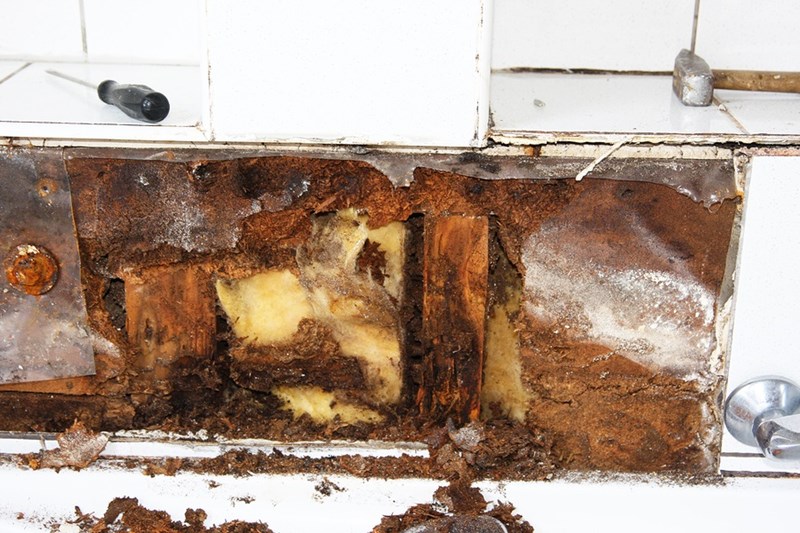Ways to Fix a Water-Damaged Wall in the Bathroom
Ways to Fix a Water-Damaged Wall in the Bathroom
Blog Article
They are making a number of great observations relating to How to Fix a Water Damage Bathroom in general in this content followed below.

The washroom is incredibly at risk for moist buildup and prospective water damage because of the constant use of water in it. This write-up provides basic inspection methods to help discovering water damages risks.
The regular use water in the restroom makes it exceptionally vulnerable for damp buildup and prospective water damages. By inspecting it on a regular basis, you can lower water related damages.
The adhering to collection of evaluations is simple to execute and ought to be done as soon as in every 3 months in order to keep your restroom healthy and also to prevent prospective water problems brought on by the bathtub, the shower, pipe joints as well as plumbing, sinks, closets, and the toilet
Do not overlook doing these examinations and be comprehensive while doing them. Remember that these straightforward inspections can save you a lot of money by supplying very early signs for water damages
Sinks and Cabinets
Sinks and cabinets are exposed to wetness as well as moisture everyday and also are usually forgotten. Inspect routinely under the sink and on the counter top above it. Repair any type of drip in the trap as it might recommend drainpipe issues. Browse the sink, sluggish draining pipelines might suggest an obstructed drainpipe. Replace sink seals if they are broken or loose.
Tub as well as Shower
The shower and bathtub require special attention and upkeep. Examine the floor tiles and also change if split. Make certain that there is no missing grout between the tiles. Inspect and also change split caulking at joints where the wall surfaces satisfy the floor or the bathtub. Clogged drains pipes and also pipelines issues will prevent the bath tub from drying out as well as may indicate serious troubles underneath the tub. Speak with a professional quickly to avoid structural damage. Pay attention to stainings or soft locations around the bathtub walls as they might suggest an internal leakage.
Plumbing
Signs for water damages are difficult to spot given that a lot of pipes are mounted inside the wall surfaces.
Pay special attention to floor covering as well as walls dampness as well as stains as they might suggest an invisible plumbing trouble. Inspect moisture degrees in adjoining areas also.
The Toilet
The commode is a prone water joint. Inspect the water lines and look for leaks around the commode seat, in the pipe, and under the water container. If you spot any kind of indications of moisture on the flooring around the toilet, look for leaks in the toilet edge and container seals.
Understand that hanging commode dish antiperspirants boosts the chances for blockages.
Water Damage Signs In The Bathroom To Avoid Cleanup
Musty smell
This is one of the easiest signs to catch because musty smells are so odorous. The damp, earthy, moldy smell should be a big red flag. The smell will develop when moisture gets trapped in surfaces, and begins to facilitate mold growth. Leaking pipes under cabinets, inside walls, and behind shower fixtures will cause moisture to stay trapped and not dry, which will lead to mold growth and spread. As soon as you notice any musty smells in your bathroom, have it checked for hidden water damage and cleanup signs.
Visible mold
If the smell isn’t there to give it away, sometimes you will actually see mold growth. Finding mold in your bathroom is a serious problem, because mold is very harmful to your health. By the time mold growth is visible, it also means that water damage has already occurred and been present for some time. The only way the mold problem can be resolved is to find the source of the moisture and get it stopped. To safely and adequately remove mold, you need to have professionals handle the remediation. Do not waste any time in getting mold problems addressed, fixed, and sanitized so that you can protect you and your family from the many respiratory symptoms caused by mold exposure.
Damaged floors
Bathroom floors should be able to withstand some exposure to water while still remaining in good condition. However, when excess exposure or water leaks occur, they will begin to damage even the most water-resistant flooring. If you notice any cracking, bubbling, staining, or warping on your bathroom floors, there is probably a water leak somewhere causing the distortion. If you notice areas of the floor have become softer, or even have a spongy feeling, there is probably damage to the subfloor. Subflooring is typically made up of plywood. When plywood is exposed to water or moisture, it will absorb it. Once it has become saturated, the weight of the excess water will cause the wood to swell and soften. Check the floors in your bathroom frequently to catch any of these sings before they lead to damaged subflooring.
Changes on walls
When water leaks behind walls, it will cause changes in the drywall. Peeling plaster, blistering paint, and soggy wallpaper are all good indicators that excess water is building up behind the wall. Water leaking behind drywall will cause it to swell and be soft to the tough. If you start to notice gaps along the trim of your walls, or where tile meets the wall, it could also be a strong indicator that there is a leak behind the wall. Any changes, distortion, or damage on the walls should be evaluated as soon as you notice it to prevent further water damage and cleanup.

I was introduced to that editorial about Preventing Water Damage in the Bathroom from an acquaintance on our other domain. If you please take the time to distribute this entry if you enjoyed it. Many thanks for taking the time to read it.
This Website Report this page